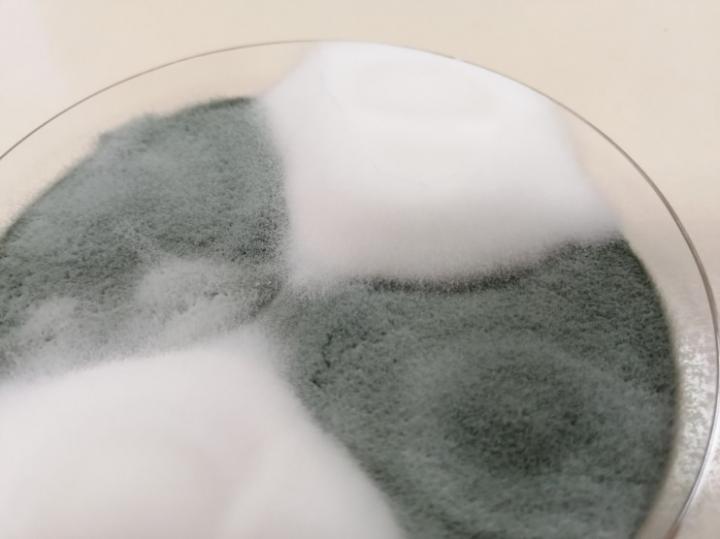
Credit: © Tatiana Giraud, CNRS researcher at the Ecology, Systematics and Evolution Laboratory (CNRS/Université Paris-Saclay/AgroParisTech), CNRS Silver Medal 2015
The white, fluffy layer that covers Camembert is made of a mould resulting from human selection, similar to the way dogs were domesticated from wolves. A collaboration involving French scientists from the CNRS* has shown, through genomic analyses and laboratory experiments, that the mould Penicillium camemberti is the result of a domestication process that took place in several stages. According to their work, a first domestication event resulted in the blue-green mould P. biforme, which is used, for example, for making fresh goat’s cheese. A second, more recent domestication event resulted in the white and fluffy P. camemberti. Both domesticated species show advantageous characteristics for maturing cheese compared to the wild, closely related species: they are whiter and grow faster in cheese-ripening cellar conditions. In addition, they do not produce, or only in very small quantities, a toxin that is potentially dangerous to humans; they also prevent the proliferation of undesirable moulds. This research, published on 24th September in Current Biology, may have an impact on cheese production, by steering the selection of moulds according to the desired characteristics.
###
* The study involved scientists from the Ecology, Systematics and Evolution laboratory (CNRS/Université Paris-Saclay/AgroParisTech) and the Biodiversity and Microbial Ecology laboratory (Université de Brest, Plouzané).
Media Contact
Clara Barrau
[email protected]
Original Source
https:/
Related Journal Article
http://dx.



